- europages
- >
- COMPANIES - SUPPLIERS - SERVICE PROVIDERS
- >
- processing
Results for
Processing - Import export
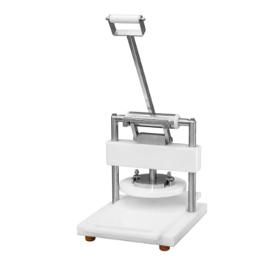
PAULUS STUART SPRL
Belgium
The Tenderstar manual meat press operates like the Econox manual tenderizer. It flattens and softens most types of meat quickly and effortlessly. With this press, it is possible to flatten about 40 parts in 5 minutes. The machine is equipped with a manual control arm that can be lowered to exert pressure on the piece of meat. The plastic tray is rotating and sliding, which allows it to be adjusted according to the thickness of the product and allows the meat to be easily inserted under the press. In addition, this one is removable. It is therefore possible to mount a smooth plate for delicate meats such as poultry or a textured plate for meats such as beef or pork. The manual meat press is ideal for escalope, dried meat, wok meat or even minute steaks.
Request for a quote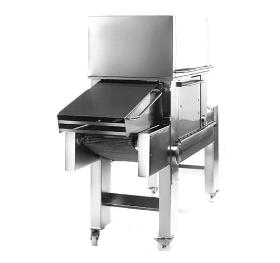
PAULUS STUART SPRL
Belgium
The Tenderstar TSAB tenderizer is a fully automated tenderizing machine that can process pieces of meat measuring 140 mm × 330 mm. This high-end device is ideal for the food processing industries as it can process a large quantity of meat in a minimum amount of time. Quite easy to use, just place the piece of meat on the belt, choose the degree of tenderizing (3 possibilities) according to the hardness of the piece of meat and the 784 needles do the rest. The speed adapts itself and oblique guides keep the meat well centred on the belt. The result obtained is therefore uniform and unmarked for a juicy and tender meat. In terms of hygiene and maintenance, this Tenderstar machine is very practical. Made of stainless steel, it does not rust. In addition, it is quite easy to clean since all parts in contact with the meat can be dismantled without tools to be sterilized or cleaned at very high temperatures.
Request for a quote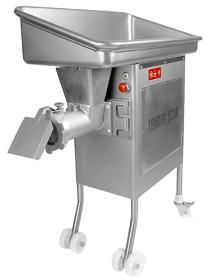
PAULUS STUART SPRL
Belgium
The Tenderstar TSH52 mincer is a robust and quality machine, made of stainless steel for a long life. Thanks to its large tank, its helicoidal hardened steel grooves and its powerful motor (completely enclosed in the structure), it is possible to grind up to 1600 kg of meat per hour. This meat mincing machine is equipped with a trough with grooves to facilitate the rapid removal of meat particles and detergent products used to clean the machine. It is therefore easy to clean this mincer and thus to maintain optimal equipment hygiene. This machine is also very safe as it has a probe to check that the tank is properly closed before starting, which prevents starting if the machine is not locked in its working position. In addition, it has a waterproof on/off button that protects against overloads. The TSH52 mincer is delivered with a knife, a plate, a stainless-steel deflector, a wrench, and some spare parts and is guaranteed for 5 years.
Request for a quote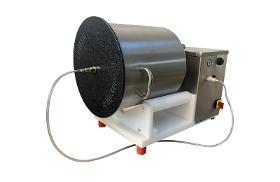
PAULUS STUART SPRL
Belgium
Vacuum tumbler 35 liters Obtain very quickly a juicy, more tender, tasty meat, And fresh compared to old marinating methods is Finally possible thanks to the “flavor maker” tender star The flavor maker tender star will help you make marinades very quickly that your customers will ask for again and again very economical: significant savings in marinade (up to 90%). unique bowl drive, simple, safe and reliable. fast, average working time 20min. hygienic, smooth inner tank and everything can be disassembled quickly without tools to be cleaned. easy handling thanks to 2 handles.
Request for a quote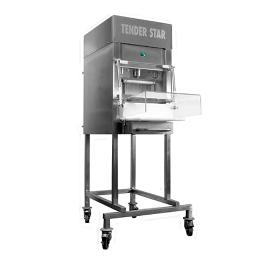
PAULUS STUART SPRL
Belgium
The Tenderstar TSE tenderizer is an electric and semi-automatic tenderizer for meat parts measuring 140 mm × 300 mm. Thanks to it, the quality of the product is improved while reducing the work compared to a manual tenderizer. With this electric model, it is possible to choose the degree of tenderizing according to the type of meat. Thanks to the swivel board, it is enough to place the piece of meat on it to easily insert it under the blades. During tenderizing, the blades do not tear the meat fibres thanks to its 540 round diagonally positioned needles, which allows the original appearance of the product to be maintained. The good distribution of the incisions also provides uniform tenderness for a tasty and juicy piece of meat. The TSE tenderizer meets both hygiene and safety standards. Easy to disassemble, all parts that come into contact with the meat can be removed for sterilization or high-pressure washing. In addition, this machine is well-secured since it stops automatically
Request for a quoteDo you sell or make similar products?
Sign up to europages and have your products listed
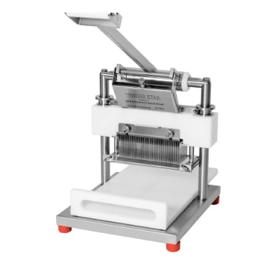
PAULUS STUART SPRL
Belgium
The Tenderstar Econox tenderizer is a manual meat tenderizer for tenderizing a 125 mm × 300 mm piece. Very resistant, it is made of stainless steel and polyethylene. This new model is the best of the two old models for even more comfort and optimal results. Thanks to its lateral swivelling board, the Econox tenderizer does not cut meat into slices and prevents the 544 blades from hitting twice in the same place. In this way, the meat is tender and juicy without affecting the original appearance of the meat. This way, you can get the most out of your less beautiful pieces of meat while offering a quality and tasty product to your customers. This tenderizer meets EC and hygiene standards since all parts that come into contact with the meat can be removed for high-pressure cleaning or sterilization. Easy to use, the various parts can be dismantled quickly and safely without the use of tools.
Request for a quote
DE SMET ENGINEERS & CONTRACTORS
Belgium
DSEC's commitment on the construction of Bioethanol plants is based on a very specialized technical knowledge of the Ethanol production processes; in this article you will find a more detailed understanding about the Downstream Process. The alcohol in the fermented mash is then concentrated by means of distillation and rectification, before the required water content of ethanol is regulated in the dewatering process. The accrued residues from distillation, the so-called stillage, is first evaporated and then dried to animal feed, the so-called DDGS. However, the production (drying) of DDGS requires a considerable amount of primary energy (e.g. fuel oil or natural gas); therefore, if feedlots are nearby, animal feed will be sold in wet condition, so called WDGS. For sugar cane and molasses the residue, so called vinasses, was returned to the fields as fertilizer- due to sustainability reasons and change in legislation, spraying of vinasses on the fields is mostly forbidden in the meantime. In the past, direct combustion of DDGS turned out to be unfeasible because of procedural difficulties and lacking efficiency (due to the high water content of the stillage). The realisation of a biogas plant could not be achieved in large scale so far because of the enormous quantities of stillage and their high organic stress. Combination of ethanol production with biogas respectively, biomass burning results in different biorefinery concepts or so called next generation technology.
Request for a quote
DE SMET ENGINEERS & CONTRACTORS
Belgium
DSEC's commitment on the construction of Bioethanol plants is based on a very specialized technical knowledge of the Ethanol production processes; in this article you will find a more detailed understanding about the Upstream process. In Europe and the US, the existing traditional 1" generation bioethanol plants typically process cereals (maize/corn, wheat, rye, ...) and other starch or sugar containing raw materials (e.g. sugar beet). The raw material initially undergoes crushing (milling for cereals) to reduce the particle size distribution to such a degree that the enzymes enter in contact with the starch molecules in the subsequent steps. During liquefaction with alpha-amylase, starch is dismantled into low molecular sugar units, the so-called dextrines. In the next process step, saccharification, these dextrines are further dismantled into fermentable sugars by means of gluco-amylase. In the fermentation process, these fermentable sugars are partly aerobically transformed, but mainly anaerobically by Saccharomyces cerevisiae (yeast) into biomass and ethanol; sugar containing raw material as e.g. sugar cane can be directly fed into fermentation after crushing. Upstream process groups: - Storage - Cleaning - Milling / Crushing - Mashing - Liquefaction - Saccharification - Fermentation (batch or continuous)
Request for a quoteResults for
Processing - Import exportNumber of results
9 ProductsCountries
Company type
Category